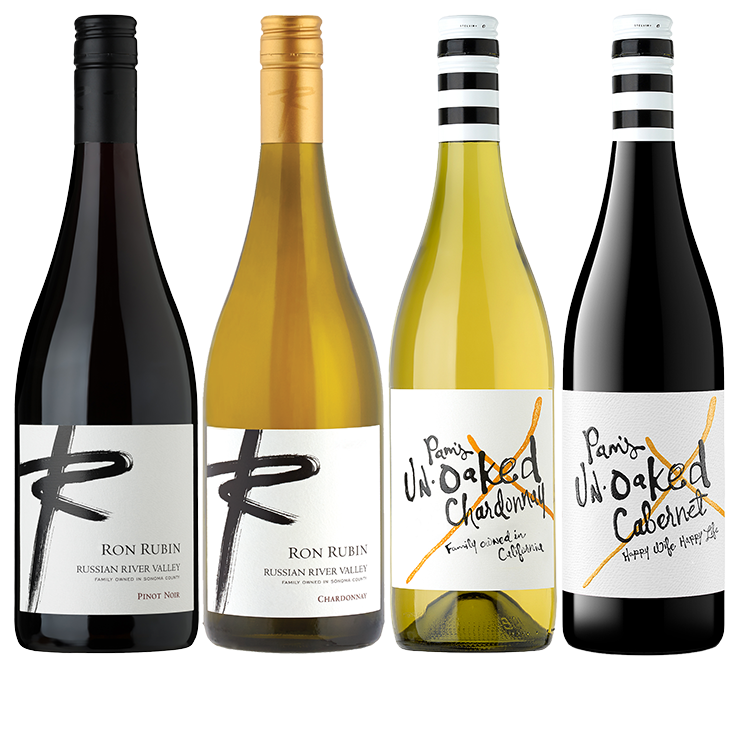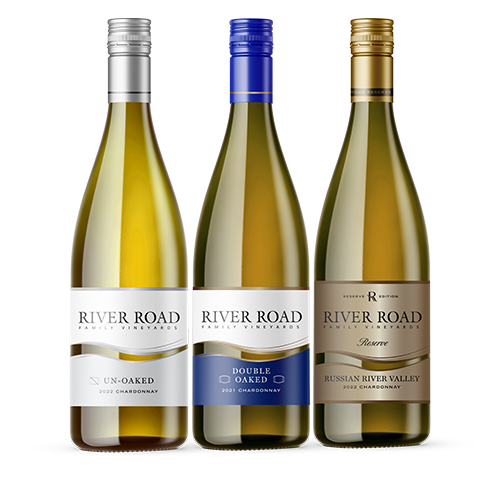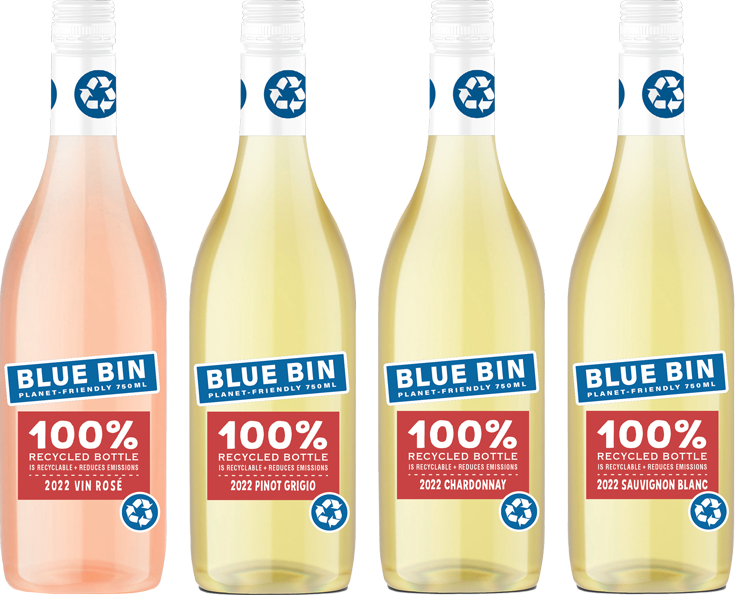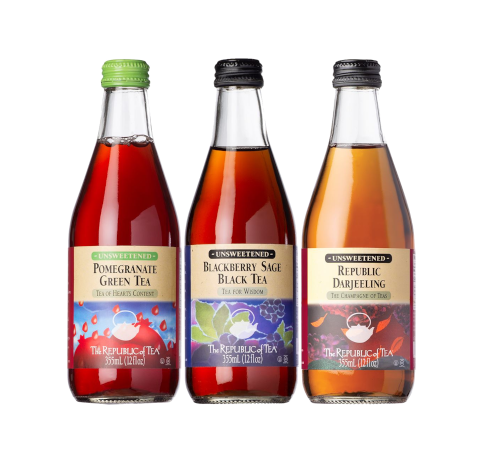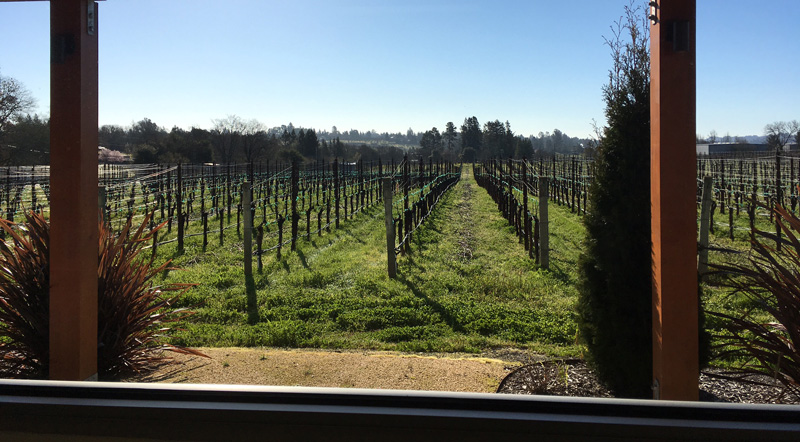Winemaking and grape growing are professions dominated by the seasons. The cyclical aspect of this industry constantly amazes me, in its ability to bring my thoughts back to natural rhythms. My work gently nudges me outside, to take a close look at what’s happening around me. Fortunately, I also have a wonderful view of our vineyard from my office (see photo above); so even on stormy days, I feel connected!
As events from previous vintages will occur again in 2017, demanding my attention, it’s challenging to share unique stories with you, not repeating stories you’ve already read. The events of this coming spring are in many ways the same as what’s occurred on this property every year since 2003, when the vineyard was mature enough to provide its first crop.
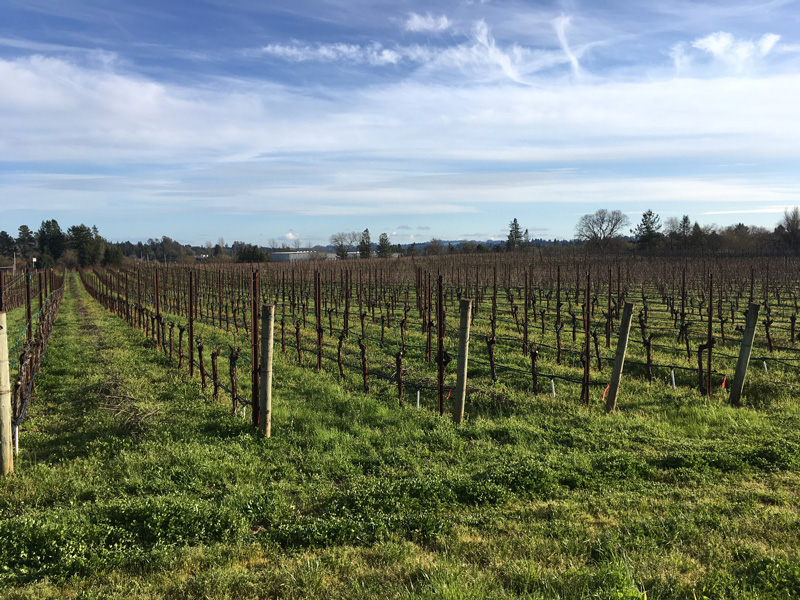
Even among this repetition, however, small differences in weather and improvements in our viticultural practices will impact this year differently from the rest. In addition to freshening my narrative, these small changes are what inspire us in the vineyard, and make the hard work of farming more rewarding.
As I arrived at the winery early last week, after yet another series of storms had dumped 6.5 inches of rain on the vineyard, a rainbow greeted me. I couldn’t help but think that it promised brighter and drier days ahead. We’re ready for spring!
AWAITING BUD BREAK
We’re still about two weeks away from bud break, according to our vineyard manager Alvaro Zamora. This is later than we’ve experienced in the past several years, yet may be a return to “normal” (whatever that might be). Depending on the nighttime temperature and cloudiness of the skies during the afternoon, awakening the vineyard could take even longer. One variable this year is the saturation of the soils, with wetter soils taking longer to heat up than dry soils. We’ll be watching carefully for the buds to swell; from the tight form visible now, through popcorn and “cotton” stages, until the first tiny green leaves emerge.
As the buds swell and pop, we’ll enter into a critical phase of sleepless nights and early mornings at the vineyard. This is frost season, which will extend into mid-May. During this period, we’ll monitor any potential drops in temperature, and prepare to use our overhead sprinklers to prevent damage. The Farmer’s Almanac is predicting a warmer than average spring, so we’re hoping to stay in the safe zone most mornings!
INTRODUCING: ED MORRIS
As promised in my February Winemaker’s Notes, we’re launching a new feature this month – Ed’s Cooper Notes! Ed’s been a trusted associate of mine since 2010, when he joined the winemaking team. Prior to his arrival, he spent 11 years building and repairing oak barrels. This gave him a depth of barrel knowledge that most winemakers will never achieve, and a desire to apply this knowledge to production of the finest wines. Enjoy your tour through the world of oak and wine with Ed Morris.
 Ed Morris, here, Associate Winemaker for Ron Rubin Winery, in Green Valley of Russian River Valley. Every three months, I’ll share interesting findings with you, on “All Things OAK.”
Ed Morris, here, Associate Winemaker for Ron Rubin Winery, in Green Valley of Russian River Valley. Every three months, I’ll share interesting findings with you, on “All Things OAK.”
Since the first century B.C., we’ve been using barrels to hold a variety of both liquid and dry goods. Wooden barrels have proven to be much more durable than the easier to make clay ones. This has elevated barrels to the container of choice, from all those years ago. The relationship between wine and wood started from necessity. But, over the centuries, we’ve discovered that using certain types of oak has dramatically improved the quality and flavors in wines. Even now, with all the other winemaking options for storage and aging wine (such as stainless steel, concrete, and durable plastics), the humble barrel is still king!
To understand why, let’s look at wood itself. Oak has an inherent resistance to rot, and is full of naturally occurring aroma and flavor compounds. These attributes are actually quite pleasant! A big part of this rot resistance comes from the oak tannins that are present in the wood. In addition to tannins, there are several other natural compounds responsible for aromas and flavors; such as vanilla bean, cinnamon, maple syrup, cedar, dill, chocolate, the list goes on and on. Given all of these factors, we have a container that will give the body of the wine support from the oak tannins. And, at the same time, it contributes layers of pleasant aromas and flavors. These add to the complexity of the wine. Sounds good right?
Now we know about oak’s great potential to harmoniously partner with wine. This is where things get complicated, though. Now we need to rely on the masterful skills of our cooperage partners. It is they who will find the oak’s potential that will be made into a variety of different styles of barrels. Depending on where the trees are grown and how the cooper chooses to process the wood and shape it into barrels, one can either minimize or maximize all of the oak’s potential attributes. Over the years, we’ve come to have a sense of which type of barrels work well for us, with the different grape varieties that we have. As we continue to learn and grow, our views and ideals continue to evolve.
Look to my next “All Things OAK” on June 1 for an explanation on the differences between the two most widely used oak types: American Oak and French Oak.
RELEASE OF GUNSALUS VINEYARD GREEN VALLEY PINOT NOIR

Later this month, on the Vernal Equinox, watch your email for the release of our newest Green Valley Pinot Noir! A Pinot Noir sourced from the Gunsalus Vineyard to our west, it provides a subtly different expression of Pinot Noir. With vines planted on signature Goldridge soils and certified sustainable, the wine will be both familiar to our fans. Yet, they’ll also be unique, with more tannin structure and a darker fruit profile. We’re very excited to partner with grape growers Glen and Pamela Gunsalus. And, we’re looking forward to releasing the wine, as it hits its stride!
Cheers!

